
Painting walls, adding new furniture, and hanging artwork are all fantastic ways to refresh the look of any room. But when you want to make a major transformation, there’s nothing like the eye-catching texture, color, and dimension of faux brick panels.
If you’ve already installed faux brick panels, you may choose to add a splash of color with a coat of paint. You can also start fresh with new faux panels. The best feature of faux brick panels is their versatility, allowing them to complement nearly any design or decor. So, unleash your creativity!
Continue reading for a guide to painting faux brick along with some essential pro tips.
Before You Paint
Although painting faux brick is a fairly simple job, you can bypass the process altogether by choosing a high quality panel that comes pre-finished in a color of your choosing.
AZ’s faux brick wall panels are available in three styles and up to six authentic colors, including the popular Dove White, Chicago Red, and Historic Brick. And since AZ Faux products are factory finished to last, painting them voids their warranty.
If your AZ Faux warranty has already expired, or you purchased faux brick panels from elsewhere, you have the option to start fresh with new panels in a different color, or paint your existing panels using this guide.
How to Get Started
First, decide whether you want to paint an existing faux brick wall, or if you prefer to start fresh with new panels. Once you’ve decided, choose what paint color(s) you want. Depending on the look you’re going for, you may need more than one color.
Then, gather the following tools and materials:
- High quality water-based paints
- Primer
- Paintbrushes or rollers
- Paint sponges
- Paint tray/liner
- Painter's tape
- Spray bottle (for whitewashing)
- Rags for cleaning surfaces
- Drop cloth or plastic sheets to protect surfaces and furniture
- Toothbrush to clean grout lines
Pro Tip: If you are installing a new wall, you may need to caulk surfaces before starting. Textured caulk and paints are ideal for touching up areas where you may have gaps or screws showing.
What Paint Should I Use On My Faux Brick Walls?
There are many options available, but it always pays to invest in high-quality paints and materials that last longer and provide superior finishes.
Base Coat
You will need to select a base coat color that mimics the mortar of real bricks. Latex satin paint is typically the best choice. Be sure to avoid oil/solvent based paints as they will not dry when applied to high-density polyurethane.
Top Coat/Finish
Next, select a glaze or paint finish color to get the exact look you want. High-quality gloss or semi-gloss enamel provides a tough coat that requires less touching up over time.
The colors you choose depend on the finish you desire. If you’re not sure about paint selection, we highly recommend bringing a sample to an associate at your local paint store. They can advise on the best formulation to achieve the preferred look.
Faux Brick Wall Painting Techniques
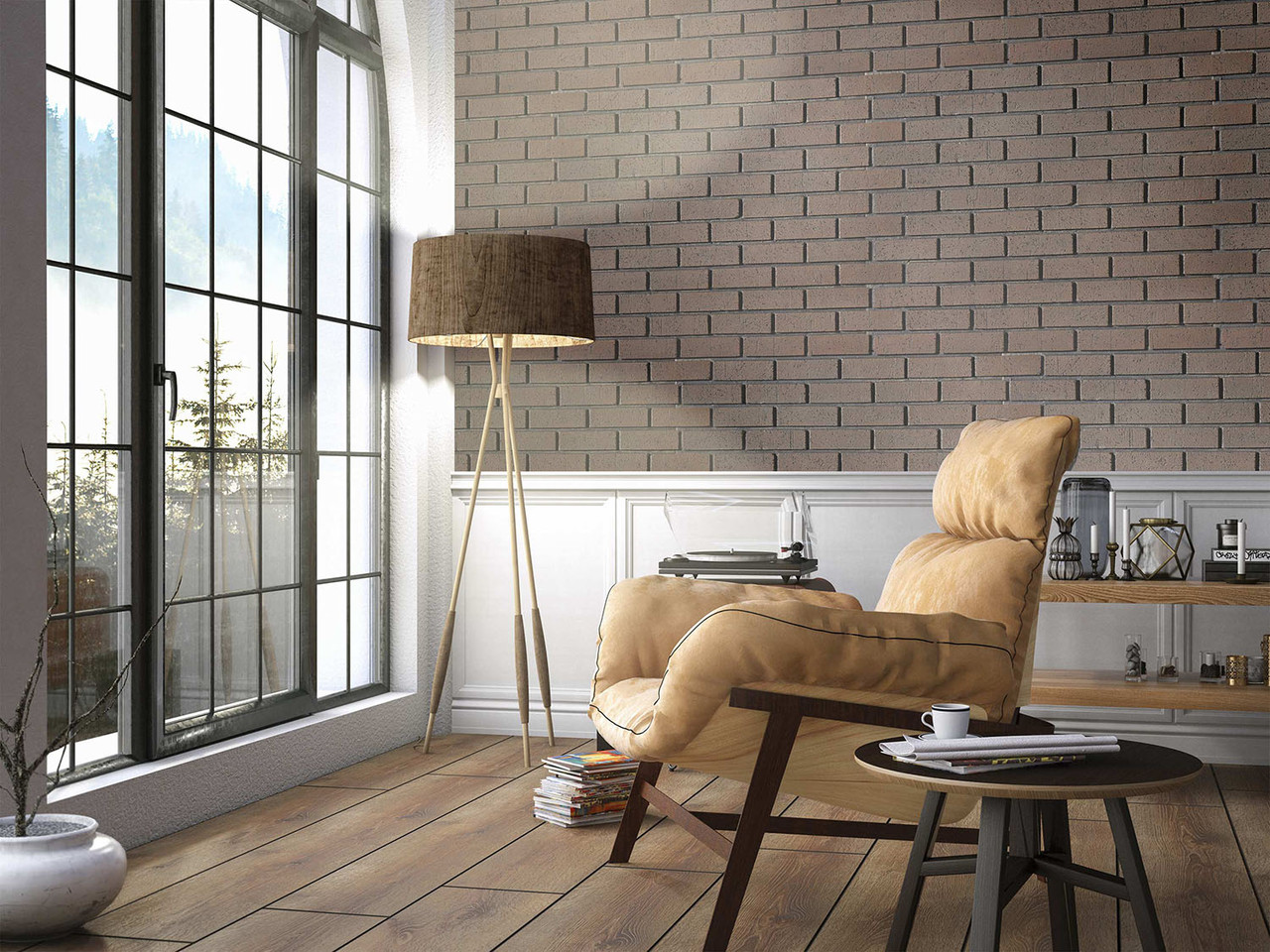 Contemporary Faux Brick Wall Panels in Blush Currant
Contemporary Faux Brick Wall Panels in Blush Currant
You have numerous options at your disposal when it comes to painting your faux brick walls.
- Traditional Painting - Use standard painting techniques and materials (like brushes and rollers) to add one or more colors to your faux brick walls.
- Sponge Painting - Sponge painting a faux brick wall is perfect if you want a colorful and playful effect. With this method, you use sponges to apply layers of different colors to individual bricks.
- White-washing - To white-wash a faux brick wall, apply a coat of watered down paint to enable all of the texture, but only some of the original color to show through.
- Combination - Use any of the above techniques in combination. Many homeowners, for example, start with a traditional paint brush or roller, then add more color on top using a sponge.
How To Paint Faux Brick Walls
As mentioned above, there are many options for painting faux brick. In this section, we’ll focus on standard painting techniques, which are the most common methods.
1. Prepare the Area
Don’t skip this step. Move any furniture away from the surfaces and cover the floors and surfaces with a drop sheet or painters’ tape.
2. Clean the Surfaces
Clean all of the surfaces you plan to paint. Dirt can easily get into the small indentations of the surface. A mixture of water and detergent works well. Use a rag or other cleaning utensil to thoroughly clean the surfaces.
Don't forget to clean the grout lines and any hard to reach areas. A toothbrush is a great tool to use here.
Once you have finished, clean the surfaces again with water and a clean cloth to remove any remaining detergent from the surface. Ensure surfaces are completely dry before moving on.
3. Apply the Base Coat
Use a roller to apply the base coat to the surfaces. If you have decided to use more than one color for the base coat, apply the darker color first and let it dry overnight. Then use a sponge to add the lighter color for an authentic brick texture.
4. Apply Finish
If you’re using a single color, pour your chosen color into a painting tray. If you’re using a mixture of colors, mix them first. You can either use a roller to apply the topcoat to the whole wall or use brushes/sponges to coat specific bricks.
Make sure you use clean tools and mixing trays for each coat so you don’t get any unwanted mixes.
5. Apply a Whitewash
If you don’t plan to use the whitewash technique, skip this step.
If you want a more industrial finish, apply a whitewash to the surfaces. This is a great way to age the surfaces and cover any mistakes or blemishes.
To whitewash, start by diluting a white paint in a paint liner and then using a dry paintbrush to apply the whitewash to the surfaces. Keep a spray bottle filled with water handy, as you can use this to thin any paint that looks too thick on the surface. Be sure to wipe any drips you may create.
6. Make Any Necessary Touch Ups
Step back from the wall and check that no one section draws the eye. For example, if one section looks more red than the rest, you may need to go back over it with another color to tone it down.
Feel free to use a small paintbrush to add highlights of whites and grays to your bricks for a cleaner look.
If your grout lines need to be cleaned up, do so before your paint completely dries.
Tips For Painting Faux Brick Walls
As you follow the above steps, these tips will help you achieve the most authentic look possible.
Caulk Gaps and Joints
If you have newly installed faux brick walls, caulk any gaps, joints, or nails to create a smooth surface for painting.
Use High-Quality Paints and Tools
As with all painting jobs, you get what you pay for. High-quality paints and tools will result in a much better finish and can significantly reduce the number of touch-up jobs required in the future.
Get Creative and Take Your Time
You have a blank canvas in front of you. You can mix and match colors to create almost any effect. Be creative and try using both brush and sponge applications to get a unique look.
During the process, step away from the wall periodically to make sure no one spot draws the eye. While it's encouraged to paint each brick slightly differently, you don’t want any one area to stick out from the rest.
AZ Faux Brick Wall Panels - Styles and Finishes
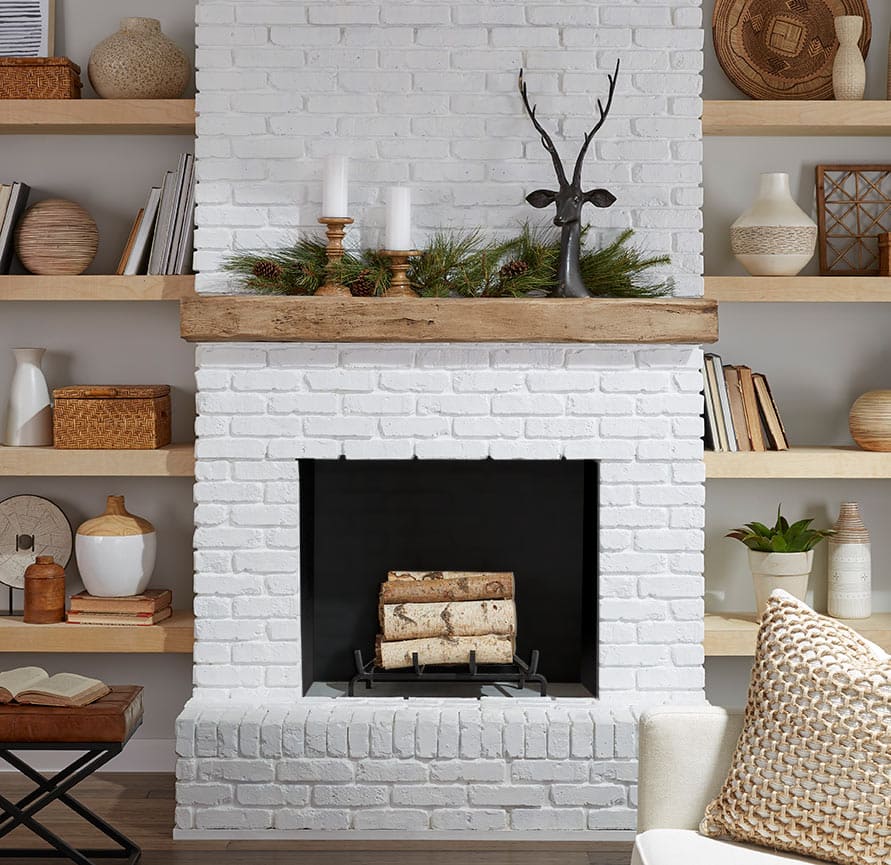 Rustic Faux Brick Wall Panels in Dove White
Rustic Faux Brick Wall Panels in Dove White
As mentioned above, if you choose a high-quality brick wall panel in an authentic color, you don’t have to worry about painting and losing your warranty. AZ Faux has several styles in multiple colors to match the aesthetic of your space.
Instead of painting, check out all of our available options!
Old Medford Faux Brick Panel
Available in three hyper-realistic colors, Old Medford Faux Brick Panels have a classic old-world look with a professional finish.
If you’re looking for a gorgeous whitewashed faux brick panel, this panel style is ideal.
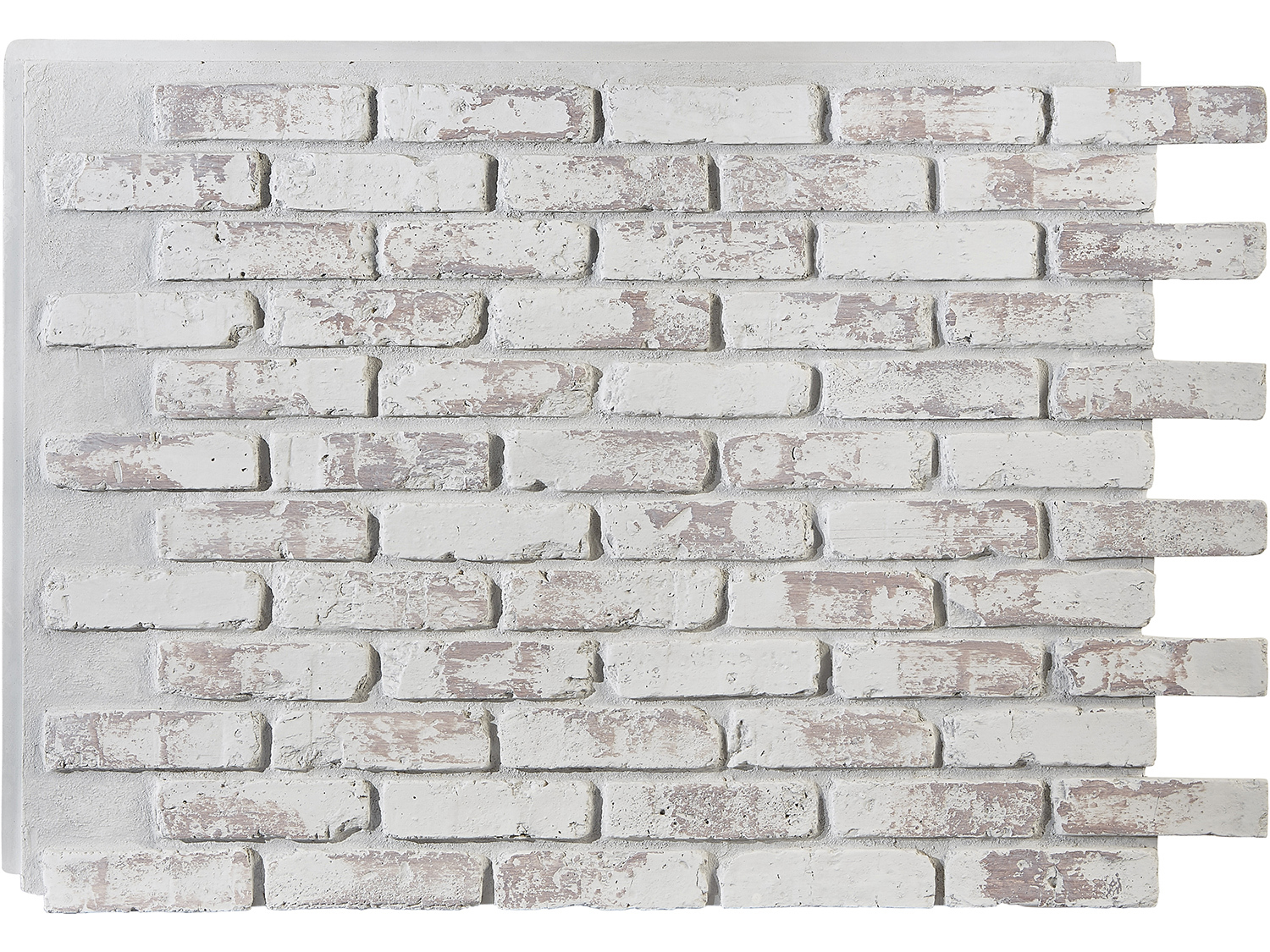 Old Medford Faux Brick Wall Panel in Whitewash Brick
Old Medford Faux Brick Wall Panel in Whitewash Brick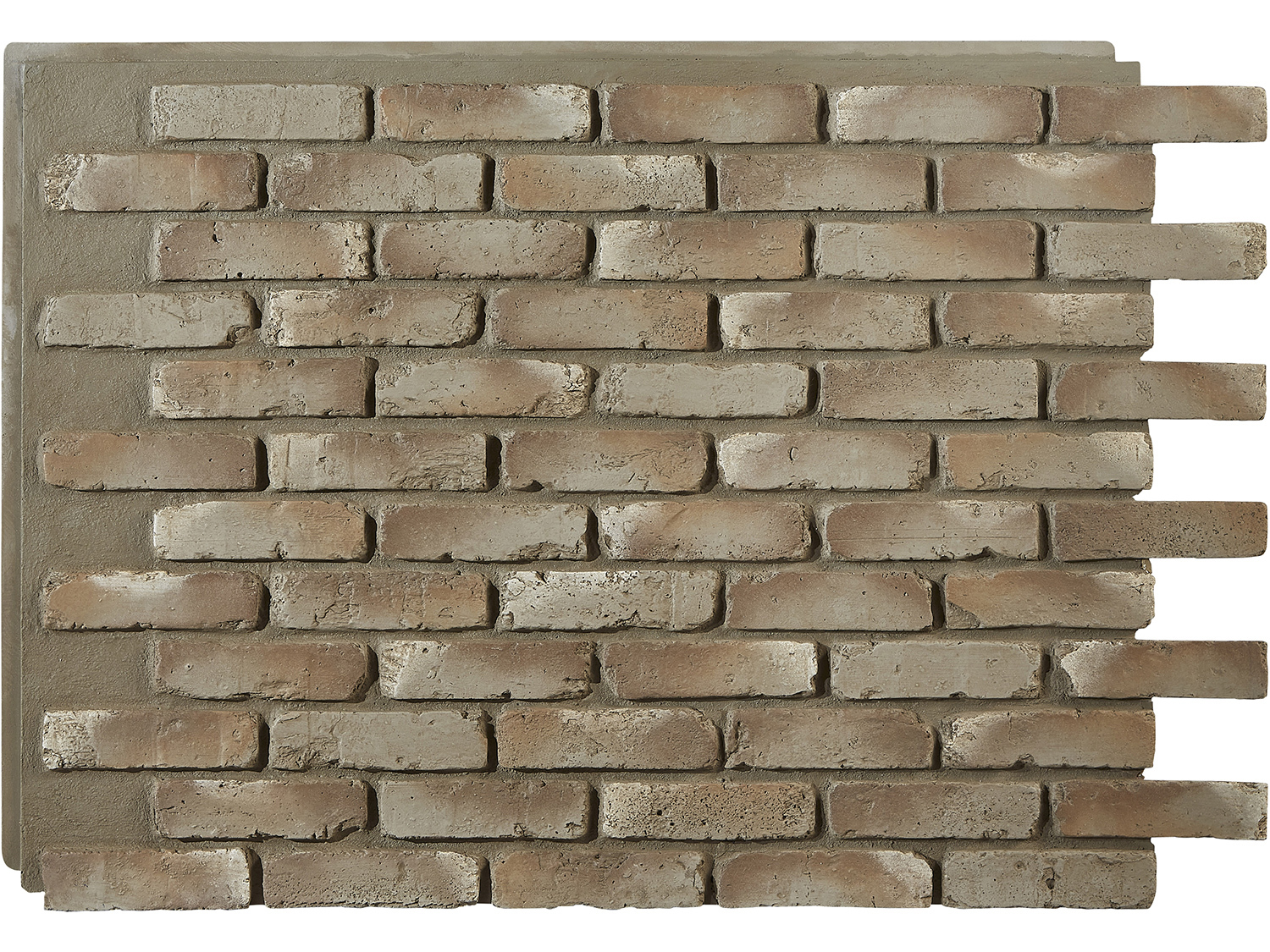 Rustic Faux Brick Wall Panel in Mountain Gray
Rustic Faux Brick Wall Panel in Mountain GrayRustic Faux Brick Wall Panel
Rustic Faux Brick Panels feature beautiful variations in color from brick to brick. With shades of white, brown, and red, one of the six available color varieties will suit your vision.
Contemporary Faux Brick Wall Panel
For a clean, modern look, choose Contemporary Faux Brick Panels. With evenly distributed coloring, they create a crisp, contemporary vibe.
Available in four authentic colors, they work beautifully as a feature wall or a stylish backdrop for furniture, artwork, and decor.
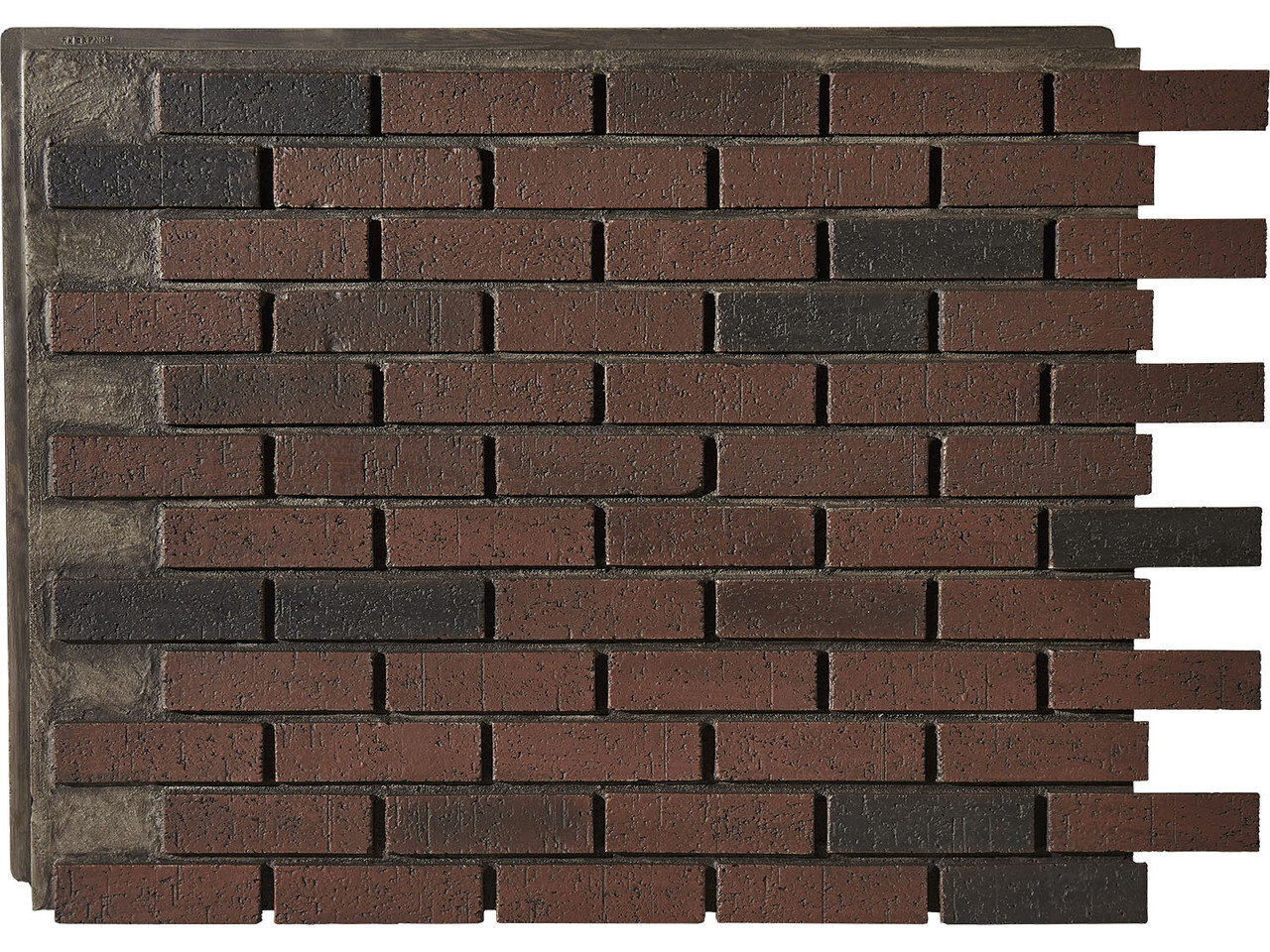 Contemporary Faux Brick Wall Panel in Red Wine
Contemporary Faux Brick Wall Panel in Red WineReady to Start Your Faux Brick Wall Project?
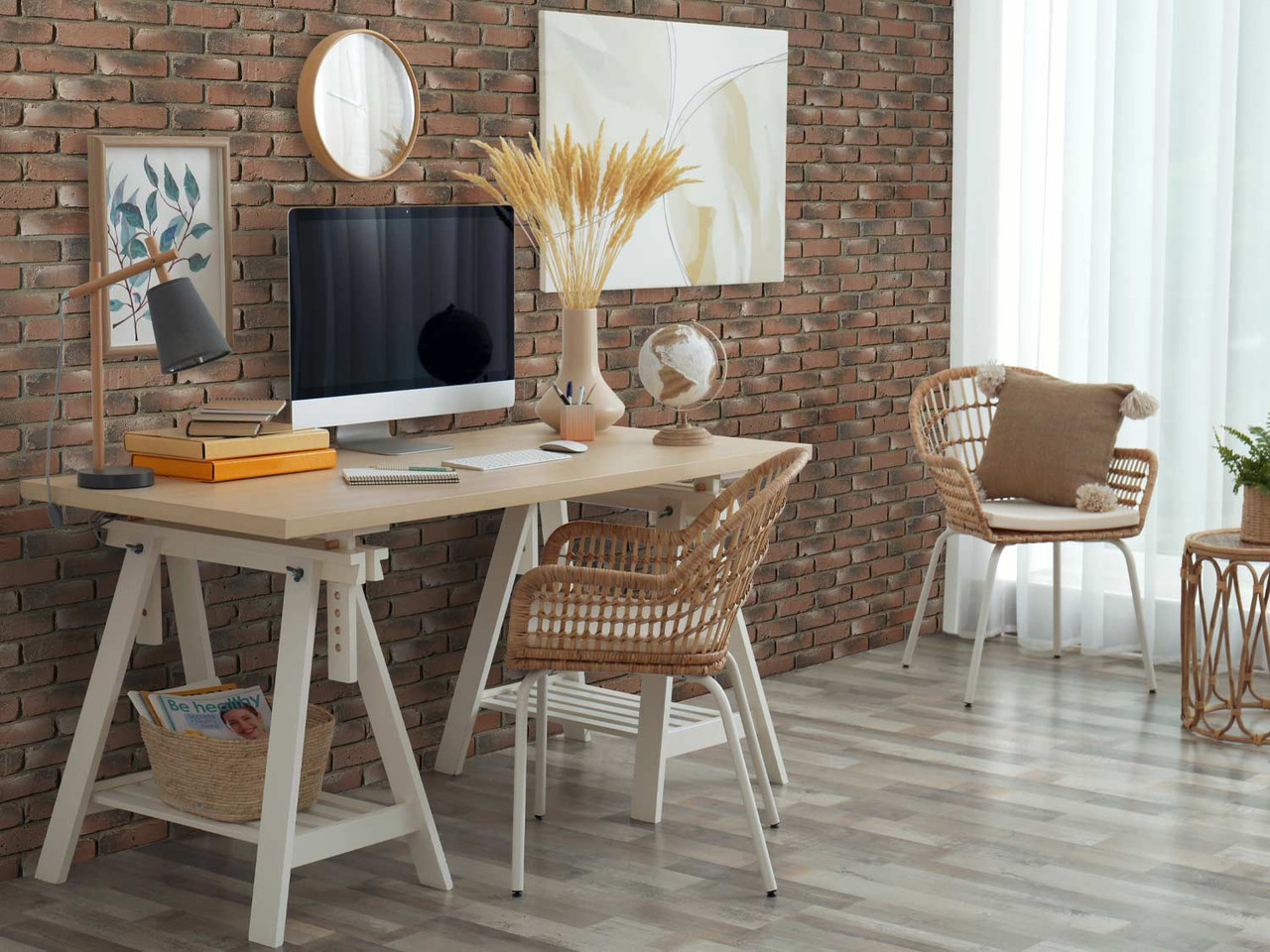 Rustic Faux Brick Wall Panels in Chicago Red
Rustic Faux Brick Wall Panels in Chicago Red
Whether you plan to paint a new or existing faux brick wall, be sure to use high quality panels, paint, and materials. Depending on your desired final product, you can paint a faux brick wall with a sponge, a roller, or an ordinary paintbrush.
When choosing the right paint for your project, don’t be afraid to ask for help from your local paint store. A faux brick wall with a fresh coat of paint can make a huge impact, so choose colors that truly match your vision.
And remember, if you prefer to skip painting your panels altogether, AZ Faux offers a wide selection of faux brick panels that mimic the look and feel of real brick, eliminating the need to deal with the hassle of paint and DIY-finishing.
Ready to get started with your faux brick wall project?